Everyone knows that men have a prostate. In fact, there are countless articles dedicated to it and hundreds of tips available on the World Wide Web on how to stimulate him from behind.
The next question is this: do women have it, too?
The answer is yes. Believe it or not, there is such a thing called the female prostate and it goes by the name, Skene’s gland. Here is the surprising part: there are ways you or your man could stimulate it, too. However, there are many experts who considered this as a myth.
Whether or not you believe in the existence of this “sexual spot,” here are 14 things you should know about female prostate, plus tips on how to stimulate it.
1. History Revealed: The Discovery of the Female Prostate
The world owes it to men and women who constantly find answers about the human body. One of them is anatomist Regnier de Graaf.
Not much has been said about the female anatomy and sexuality. However in 1672, de Graaf illustrated a set of ducts and glands surrounding the female urethra. He called this the female prostate.
After identifying the female prostate, there were no further studies to evaluate on this part of the human female body. It was only in 1880 when the world was introduced again to the female prostate. Gynecologist Alexander Skene redirected the attention to the structure of the female urethra and focused on two paraurethral ducts. He likewise emphasized the importance of these ducts in the female genitalia.
Hence, the female prostate was born and was called Skene’s gland to honor Alexander Skene and his comprehensive study of this gland. Some also call it periurethral or paraurethral gland, or lesser vestibular.
2. Getting to Know the Female Prostate Better
You might be wondering where the female prostate is located and what it can do to your sex life. The truth is the possibilities are endless.
First, where is this gland located?
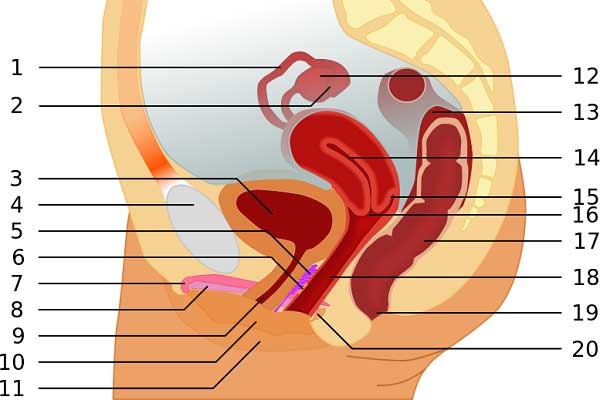
Following the description in Skene’s 1880 paper, the female prostate is housed in a sponge with the openings embedded into the urethra. It is below the lower end of the urethra, which is near the location of the supposed g-spot. You can also feel this gland indirectly through your upper vaginal wall, just two to three inches from the entrance.
The purpose of this gland is to produce fluid, which helps lubricate the urethral opening and facilitates easier penetration. The fluid likewise contains antimicrobial properties, which protects you against urinary tract infection.
These are only some of the interesting facts you should know about female prostate. Make sure you read until the end and find out how it could change your sex life.
3. A Battle Between the Female Prostate and Male Prostate
You might think that the female and male prostate are the same and have the same structural components. In fact, the Skene’s para-urethral glands and ducts revealed that the two organs are homologous to each other and are made of the same cells.
The truth is, these two organs are still different from each other, at least when it comes to function. In case you are wondering about the size, the female prostate is much smaller than that of a man’s.
These two glands share something together: the prostate specific antigen or PSA. This is the factor that sealed the existence of female prostate in the human body.

The PSA is secreted by other female body tissues from different areas in your body, as well. It is also a possible diagnostic indicator to check the existence of various conditions, such as breast cancer in women and prostate cancer in men.
Aside from your PSA, it is widely believed that the liquid produced by the Skene’s gland is a thin, clear fluid that contains glucose and prostatic acid. Surprisingly, this chemical makeup is the same with a man’s semen, sans the presence of sperm.
4. A Glimpse at the Prostate-Specific Antigen or PSA
Set aside your apprehension about female prostate and take a look at what the prostate-specific antigen is all about.
Also known as PSA, the prostate-specific antigen is protein produced by the prostate gland cells. It helps in the screening process to determine the presence of prostate cancer in men and breast cancer in women using the PSA test. It is also used to check other infections, such as urinary tract infections.
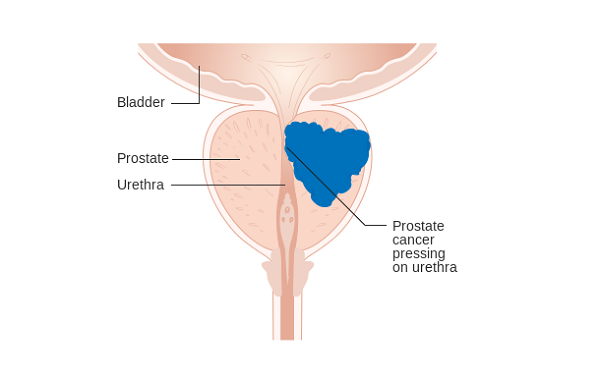
The PSA Test checks the level of this substance in the blood. The lower the PSA level, the higher the risk of cancer. Most medical literature focused PSA test on men and prostate cancer. Since the PSA found in female prostate is the same with that of men, experts figured that they can use the same test to detect cancer, particularly breast cancer, in women.
In women, your doctor can also use this test to check the existence of breast cancer. This could be helpful because the earlier the detection, the higher the possibility of getting treated. This provides hope, especially for those who are unsure of the existence of breast cancer.
5. The Female Prostate vs. the G-Spot: Understanding the Difference
You might think that the female prostate is the same as g-spot. This is a common misconception. Although they belong under the same umbrella, the truth is that the female prostate and g-spot are two different concepts and play two different roles, both in and out of the bedroom.
The female g-spot was introduced to the world by Dr. Ernst Grafenberg in 1982. He did a research study on urethral stimulation in the 1940’s and promoted about the g-spot in his book. Since then, experts are trying to find out whether g-spot exists in women, just like what happened when the world was introduced to the prostate of women.
 Unlike the female prostate, the g-spot is neither an organ nor a structure. It is a location inside the anterior wall of your vagina that provides a different kind of pleasure and sensation once hit properly. This is where the controversy lies since not everyone has clear understanding of female sexuality.
Unlike the female prostate, the g-spot is neither an organ nor a structure. It is a location inside the anterior wall of your vagina that provides a different kind of pleasure and sensation once hit properly. This is where the controversy lies since not everyone has clear understanding of female sexuality.
Speaking of sexuality, make sure you read the succeeding section and find out how this gland affects your sex drive.
6. The Ongoing Debate: The Real Role of the Female Prostate in Your Sex Life
If there is something common between the g-spot and the female prostate, since both are considered controversial in defining women sexuality.
Up to this day, there is still an ongoing debate over the anatomy and function of Skene’s glands, especially in your sexuality. Some experts claim that the fluids produced by this organ have the similar composition to prostatic fluid, which includes enzymes and proteins. This is also the reason why the Skene’s glands were considered as the female prostate.
Setting aside the controversy, how could Skene’s glands be helpful inside the bedroom?
Every woman is different when it comes to what turns you on, but one thing is for sure: this is what happens down there when you are sexually aroused:
- Your Skene’s glands are stimulated to release secretions or fluid into your urethral canal.
- The fluids or secretion are expelled through the urethral opening, which is similar to the male ejaculation.
Don’t confuse these fluids from the Skene’s glands with the secretions to keep your vagina lubricated. Believe it or not, these two types of fluids are far different from each other.
Are you ready to learn more about Skene’s glands and its female prostatic function? Then keep on reading until the end and find out what this particular organ could do to your sex life.
7. The Surprising Truth About Women and Skene’s Glands
Human beings are not created equally. Some are born tall, short, with white skin, brown skin, blonde hair, red hair, and the list goes on.
Here is the surprising part: Not all women have Skene’s glands too.
Yes, you read that right. It turns out that this gland is not present in all women. Here is the more surprising part: not all women even know that Skene’s glands exist. Bizarrely, most illustrations of the female reproductive anatomy do not include this organ, which explains why not everyone knows that it is there.

Does this mean women who don’t have female prostate are unable to ejaculate and experience orgasm?
This one is still subject to debate and further research. Some experts believe that the bigger the Skene’s gland, the more of a squirter you are. On the other hand, a smaller prostate means less possibility of squirting.
This is perhaps the reason why some women are able to squirt or have more pronounced orgasms, compared to the others. There is also a possibility that some women are unaware that they are already climaxing because of the presence of the prostate, or the lack of it.
If you are part of the squirting club, then now you know why it happens.
8. Female Prostatic Stimulation: The How in Stimulating Your Prostate
For discussion’s sake, you learned that you have Skene’s gland. You don’t mind the controversy revolving around it and believe that this area could give your sex life a boost. The challenge now is how to stimulate it even if you are alone.
Don’t worry. Here’s how you can stimulate your own prostate:
 Start with doing a squat position. The squatting position enables you to exert more direct pressure and stimulate the area. At the same time, the urethral canal is not compressed, thereby increasing your possibility of outward ejaculation.
Start with doing a squat position. The squatting position enables you to exert more direct pressure and stimulate the area. At the same time, the urethral canal is not compressed, thereby increasing your possibility of outward ejaculation.- Insert one or two fingers in your vagina and slowly go deeper.
- As you go deep, you will feel an area of ridges. Slowly stimulate the area until you feel the sensation of urinating. This is because of the indirect pressure applied to your bladder; hence the sensation.
You can also do this with a partner by following the same pointers. However, it might be easier if you are facing each other. This way, he could see your reaction and make the necessary adjustments based on your expressions.
Apparently, it doesn’t end here. Check out the next pointer for tips that ensure success in prostate stimulation.
9. Tips to Remember to Enjoy Prostate Stimulation Even More
Stimulating your prostate is not just about locating the gland and allowing your fingers to do their magic. The thing is there are pointers you need to remember to ensure success and a pleasurable experience.
In case you decided to go for it, here’s what you should remember:
-
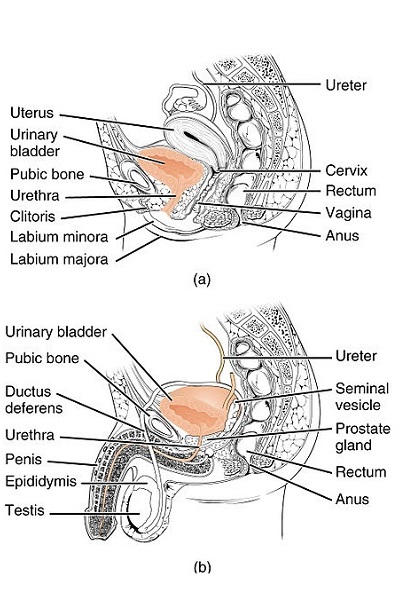
Photo by OpenStax College / CC BY The success of prostate stimulation relies on your current arousal state. The more aroused you are, the easier it is to find your g-spot and eventually, your prostate.
- Don’t hold back when you felt the sensation to pee. Allow yourself to feel the sensation and don’t be afraid if you feel the need to expel the fluid.
- Empty your bladder before the scheduled session. This minimizes your urge to pee during the actual stimulation.
- Learn how to locate your g-spot.
- Stimulate your g-spot by applying gentle pressure on the area.
- Do not put too much pressure on the urethral tract. Otherwise, the fluids might go directly into your bladder instead of the urethral opening.
You can also take HerSolution female enhancement pills to make sure that you are in the mood to seal the deal.
Aside from the physical preparation, your mental state should likewise be prepared before going through this process. Keep in mind that women have the tendency to over-think and over-analyze the situation. If you continue doing that, then there is a possibility that you might ruin the experience.
This leads you to the next tip.
10. It’s Also About the Mindset: How Your State of Mind will Define the Success of Prostate Stimulation
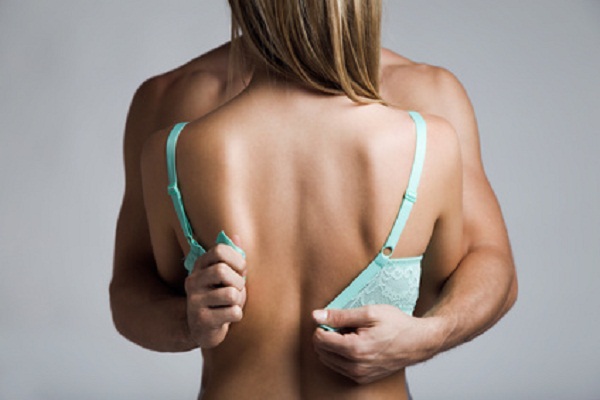 The truth is sex and women requires more than just the physical aspect. You need to feel the connection and in your peaceful state before you decide to take off your clothes or even think about doing something out of the box.
The truth is sex and women requires more than just the physical aspect. You need to feel the connection and in your peaceful state before you decide to take off your clothes or even think about doing something out of the box.
In other words, your state of mind could make or break the success of stimulating your prostate.
Here are some reminders:
- Maintain an open mind. Once you break the psychological barriers, you would be able to enjoy the experience more.
- Don’t be afraid of the sensation. Unless there is pain or discomfort, allow yourself to experience the pleasure that comes with stimulating your prostate.
- Keep yourself in a relaxed state before engaging in this type of sexual activity. Take a warm bath, listen to a calming music, light scented candles in your room, and keep your temperature cool are some of the ways to help you relax. The more relaxed you are, the better the experience will be.
The bottom line is to enjoy the experience. If you are relaxed, then you will be able to enjoy and appreciate the experience. You only live once so might as well give this a try.
If you plan to do this with your partner, then make sure you talk about it. Stimulating your prostate is a new experience and it is best that you and your partner agreed to it to make it more pleasurable and memorable.
11. Reality Speaks: The Experience May or May Not be Pleasurable
 Let’s say you were able to prepare physically, mentally, and emotionally. Your partner was even up for it and promised to take it slow to avoid complications down there. Everything went well and finally, he was able to hit the right spots.
Let’s say you were able to prepare physically, mentally, and emotionally. Your partner was even up for it and promised to take it slow to avoid complications down there. Everything went well and finally, he was able to hit the right spots.
Here’s the thing: you didn’t like it.
The truth is hitting your prostate can go both ways. Either you will enjoy the experience or you don’t. In case you didn’t like it or you realized that you are not too sensitive on this kind of stimulation, then that’s fine. Don’t pressure yourself into liking it for the sake of crossing something in your “Sex Must Do” list.
There are many ways you can enjoy your experience in bed. Focus on that instead. After all, female ejaculation is not for everyone.
Speaking of female ejaculation, read the next section and find out the controversy surrounding it.
12. Female Ejaculation: Myth Versus Reality
Here’s something you should know about female sexuality: despite the advances in technology, experts are still not able to uncover the science behind it. The not-so-surprising part is this: even the top sex experts are divided when the topic of female ejaculation is on the hot seat. The concept of female ejaculation through the prostate is a controversial issue. In fact, some people may be uncomfortable discussing and imagining a woman could ejaculate.
Is this even possible? The answer is yes.
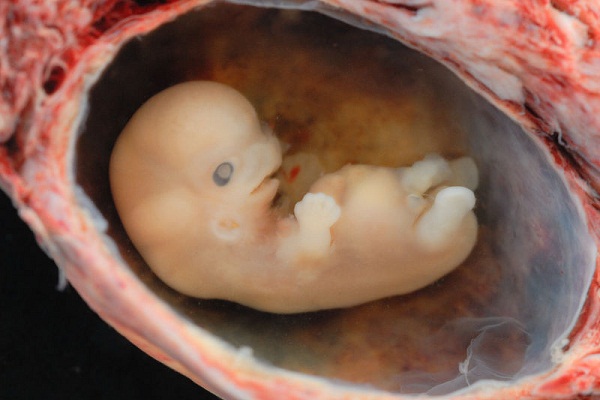
All embryos appear to be female until eight to 10 weeks gestation. Thereafter, an embryo develops a Y chromosome, produce testosterone, and develop male sexual features. This explains the similarities between the anatomy of men and women. This is also another angle looked into by experts who believe in female prostate, which is responsible for releasing ejaculate fluid.
Did you know that female prostate could do more than just releasing ejaculation fluids? The next pointer will tell your more about it.
13. The Clinical Implications of Female Prostate
You can’t help but be amazed with your body. It comes with vital organs that help you function properly and at the same time, the organs are designed to help and complement one another. The good news is even your prostate could provide more than just fluid secretion when you are aroused.
Here are the clinical implications of female prostate:
- Can be the origin of infections.
- Serve as a site of origin for human immunodeficiency virus.
- Helps detect the presence of tumor-causing cancer.
- Identifies presence of male-specific markers in vaginal secretions that could indicate rape.
 In other words, the female prostate could be instrumental, not just in boosting your sex life, but also in allowing you access to better health care because of the ability to detect possible medical conditions.
In other words, the female prostate could be instrumental, not just in boosting your sex life, but also in allowing you access to better health care because of the ability to detect possible medical conditions.
Despite the controversy surrounding the female prostate and its intention to boost your sex life, the Skene’s gland is still susceptible to illness. In fact, it could even lead to cancer. The surprising part is there is a possibility that the symptoms of Skene’s gland cancer is misdiagnosed and will not be treated accordingly.
Read the next section to find out what this medical condition is all about.
14. When the Big C Visits Your Body: A Glimpse of Cancer of the Skene’s Gland
According to the National Cancer Institute, an estimated 1.6 million people will be diagnosed with cancer and close to 596,000 will die from the disease. The common culprits are the same with breast, lung, and skin cancer still topping the race.
Did you know that there is such a thing called Skene’s gland cancer?
Breathe. The female prostate gland cancer is a rare disease, which accounts for less than one percent of genital cancers in women. Women over 40 years age group are more at risk. The factors that trigger this type of cancer is unknown, although experts identified risk factors such as:
 Human papilloma virus or HPV infections
Human papilloma virus or HPV infections- Smoking
- Prolonged intake of hormonal medications
Symptoms include:
- Pain or discomfort in urination
- Blood in the urine even after menstruation
- Elevated levels of PSA
- Painful sexual intercourse
- Abnormal vaginal bleeding
- Sudden loss of weight and appetite
Some doctors may misdiagnose infections, cysts or inflammation as a type of gynecological or urinary condition. If you suspect something is different, make sure to talk to your doctor and explore the possibilities of running further tests to ensure that the symptoms do not signify something more serious.
How will you know if you have a prostate or not? The best way to do this is to schedule a session either alone or with a partner and locate it. As you go through the process, take note of the tips mentioned in this post to remind you of what to expect.
More importantly, just relax and take it one step at a time. If drinking a glass of wine will help calm your nerves, then so be it. Hitting the female prostate is a combination if various factors, including your emotional and mental state. The more relaxed you are, the better the experience will be.
